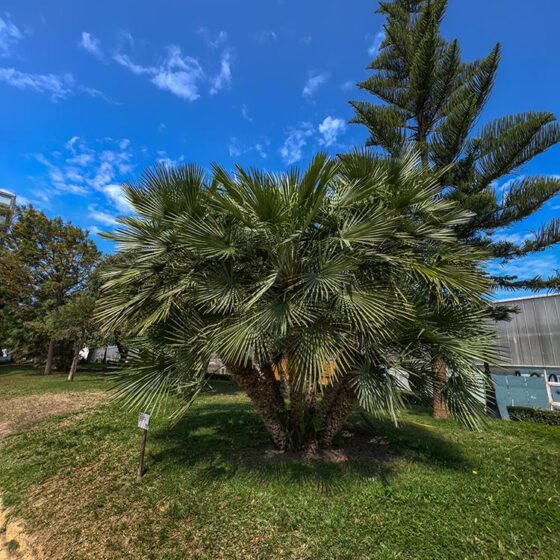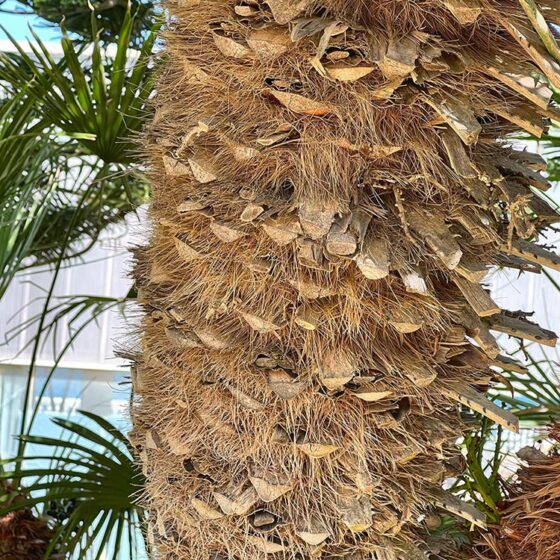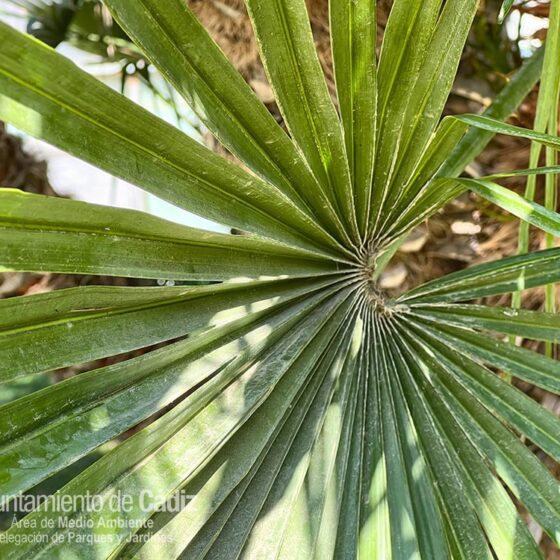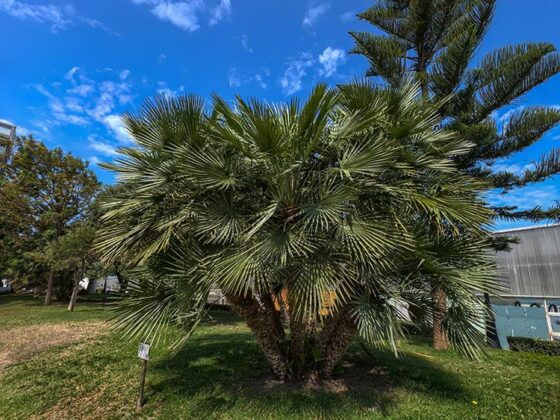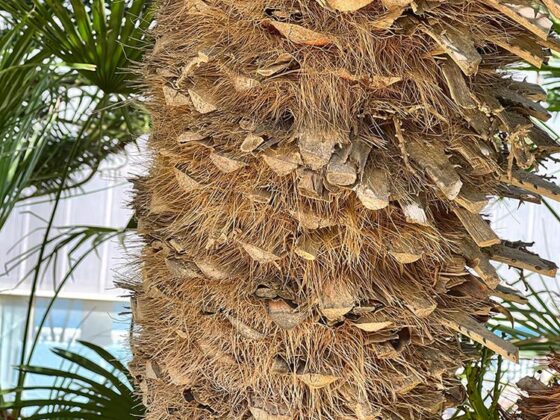European Fan Palm
Chamaerops humilis
The name of its genus comes from the Greek words chamai meaning dwarf and rhops meaning a bush. The name of the Humilis a specific epithet from Latin meaning low-growing.
Palm tree native to the Mediterranean area. It can be considered as one of the most representative elements of the Mediterranean vegetation of south-western Europe.
It is a dioecious palm, or sometimes hermaphrodite, which in its natural habitat usually has several trunks of stunted size growing from 1 to 2 m. When cultivated, they can grow up to 3 or 4 m. of height and there may be some with just a single trunk. The trunk tends to be thicker in its upper part, and on mature palms they are covered with a dark mat of fibres and old leaf bases. The leaves are of a green or teal colour, 50-80cm, with 30 deeply divided leaflets which are arranged in the shape of a fan at the end of a spiny petiole, hence the common name of fan palm. The petiole is very thorny with straight thorns in a yellowish colour of 2 to 3 cm. Inflorescences can be 15 to 20 cm in length. Its fruit is rounded with a yellow-reddish colour with a slightly fleshy texture.
It is multiplied by seeds. It is the only palm tree that grows spontaneously in Europe.
The apical “heart” or “bud” of the plant is tender and edible just like the floral spathe when it is young.
Its fruits, commonly called non-edible dates, were used in folk medicine as an astringent, and its leaves, for the manufacture of brooms, baskets and mats.
Tolerates all types of soils, growing better on land with abundant water sources. Resists drought, even marine winds, full sun and half shade and can withstand temperatures of up to 10 degrees below zero.
There are examples in Cadiz in Genovés Park, Plaza de España, Parque de los Cinco Continentes, Plaza de Santa Ana and José León de Carranza Avenue.


